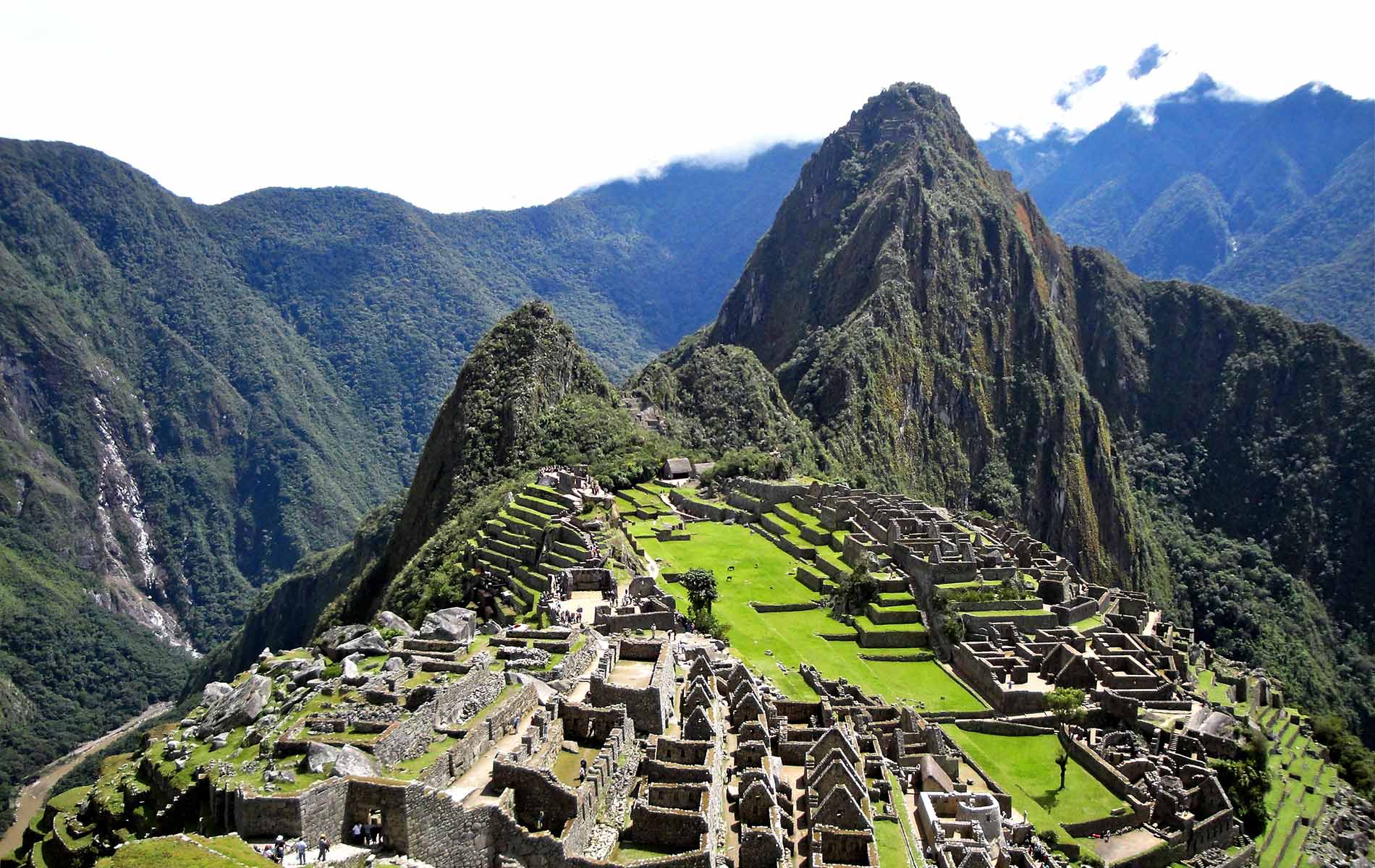
vie-magazine-peru-machu-picchu
Peru’s Holy Grail of Hiking
A Spiritual Journey to Machu Picchu
Story and Photography by Kim Duke-Layden
Every December, I start compiling my list of upcoming New Year’s resolutions. My roster typically consists of several self-improvement goals, a few financial and physically challenging aspirations, and a couple of bucket-list trips to satisfy my insatiable wanderlust. Topping my 2010 list of personal achievements was traveling to Peru last April for two weeks of action-packed adventure from the Andes to the Amazon. The highlight was a four-day trek along the classic Inca Trail to Machu Picchu, which was my most ambitious physical challenge ever. Read on for part one of my incredible journey.
The work weeks leading up to my trip felt like an endless spin on Mr. Toad’s Wild Ride. The day before my departure, I was laid off from my corporate job of sixteen years—something I wasn’t expecting. I didn’t start to unwind until the movie began on my flight to Lima. As evidence that God has a sense of humor, Up in the Air was the in-flight film. I couldn’t help but laugh when I realized George Clooney’s character was a professional “hatchet man” hired by big corporations to downsize their work force.
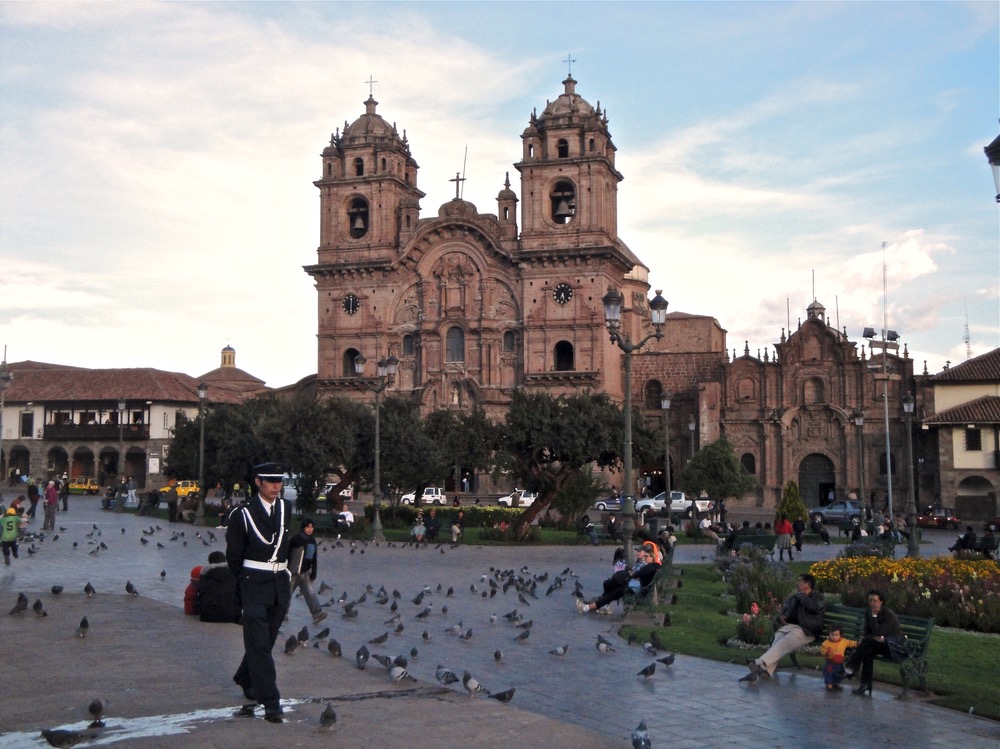
After landing at Lima’s Jorge Chávez International Airport, my cab drove along the scenic Pacific Coast en route to Hotel Britania (www.hbritaniamiraflores.com) in Miraflores, one of Lima’s nicest seaside suburbs. I loved Miraflores’s old-world charm, beautiful Parque Central and friendly locals. On the second night, I met my trip leader, Maruja, from Gap Adventures, (www.gapadventures.com), the economical adventure outfitter I used for my trip to Guatemala last year; and my travel companions, newlyweds Jane and Dave from Toronto. The rest of our group cancelled after Iceland’s volcanic eruptions disrupted their flights from Europe. Since our trip had a guaranteed departure date, the three of us received a private tour. During dinner, the three of us got acquainted and discovered we shared backgrounds in marketing. Dave worked for Visa and Jane specialized in web-based marketing. By dessert, we felt like old friends.
Our tour of the famed Sacred Valley began in Cusco. Situated southeast of Lima, high in the Andes Mountains, Cusco is considered the birthplace and capital of the mighty Inca empire. Our shuttle jostled over cobblestones as we passed Cusco’s beautiful main square, the Plaza de Armas. Colonial-style buildings with clay-tiled roofs surrounded the gardenlike setting. The grandest structure was the Catedral, whose version of the painting The Last Supper is unique in that it shows Christ and his disciples eating guinea pig. Nearby, we checked into Hotel Cusco Plaza II (www.cuscoplazahotels.com), which has an inviting hacienda-style courtyard enclosed under a glass atrium.
After sightseeing, I met Federico (Freddy) Rupa, a thirty-year-old indigenous Andean of Quechua, Peru—my trail-guide-to-be for the momentous hike that was to take place in two days. Freddy said that during his six and one-half years as a guide, he had hiked the thirty-five-mile trek to Machu Picchu two hundred eighty times! Luckily, I applied early enough (minimum 3–4 months in advance) to secure one of only two hundred coveted daily visitor permits for the extremely popular classic Inca Trail. Jane and Dave applied too late and were booked on the alternate Lares Trek.
The next day, Maruja, Jane, Dave, and I departed Cusco for a guided tour of the lush Sacred Valley. Throughout our drive, we intertwined with the Urubamba River, where we saw sobering reminders of last January’s devastating floods and mudslides that claimed twenty lives, left thousands homeless, and disrupted train service for months. In support of Gap Adventure’s sustainable tourism efforts, we visited a flood-ravaged village and bought hand-woven goods of llama and alpaca wool from its women’s cooperative. Our tour ended in charming Ollantaytambo, where we explored ancient master-planned streets and marveled at its Sun Temple fortress.
The next morning—the day of the big hike—the air was abuzz with excitement. Within hours, many of us were beginning Peru’s “holy grail of hiking.” After breakfast, I joined Freddy and met my fellow trekkers for the day: Sofie and Josefine, best friends from Denmark taking a break from college and traveling around the world; gazellelike Claire, a recent college graduate now working as an occupational therapist in Melbourne, Australia; newlyweds Kate and Justin, who, coincidentally, were also from Melbourne—Kate was a dietician and Justin worked in transportation sales; and, thirty-two-year-old ophthalmologist Brian from Ireland. And then there was yours truly, the eldest of our group.
It was a bumpy bus ride to the start of the trail at Piscacucho. We parked in a grassy field where hundreds of uniformed porters, hired by various adventure companies, packed gear and provisions for the trail. Our feet crunched along the gravel path leading towards the starting checkpoint. I felt grateful the trail had reopened after several months of repairs; and although it was “rainy season,” the sun shone brightly. After checking in and posing for photos, we followed the bridge over the Urubamba and up the dusty path.
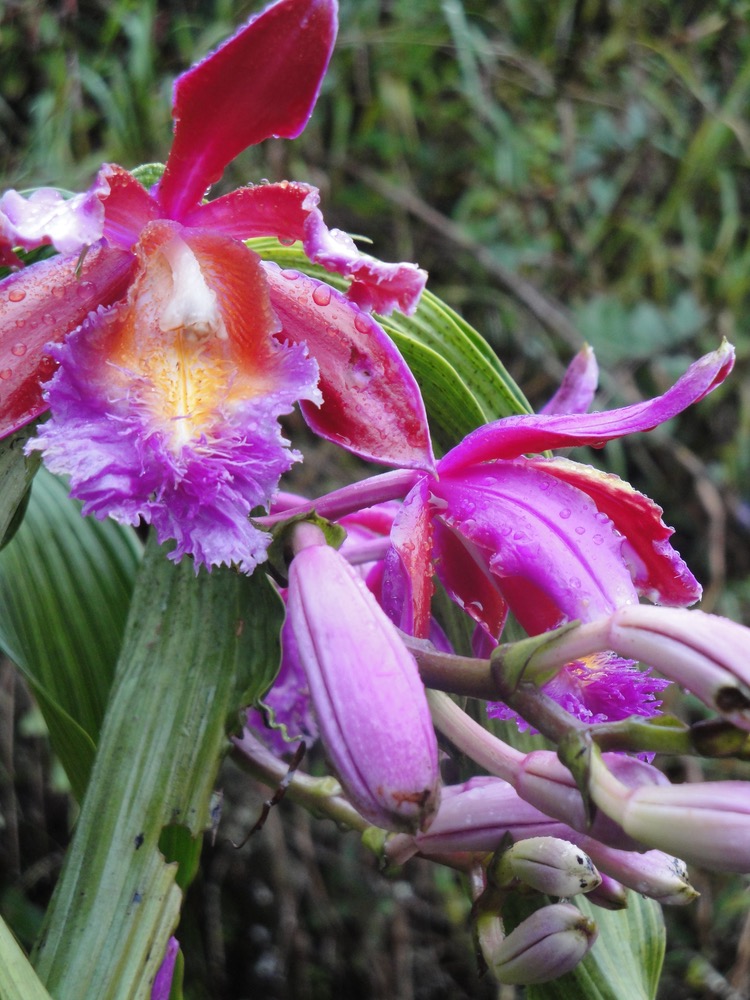
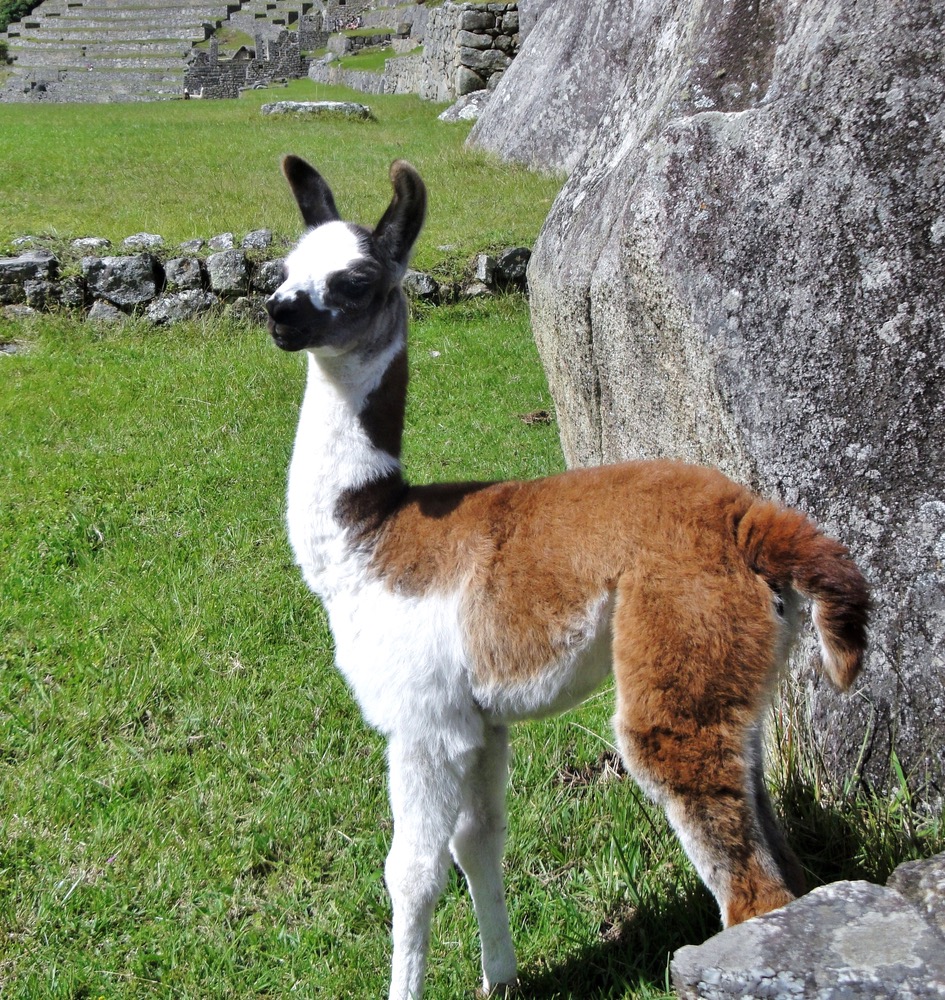
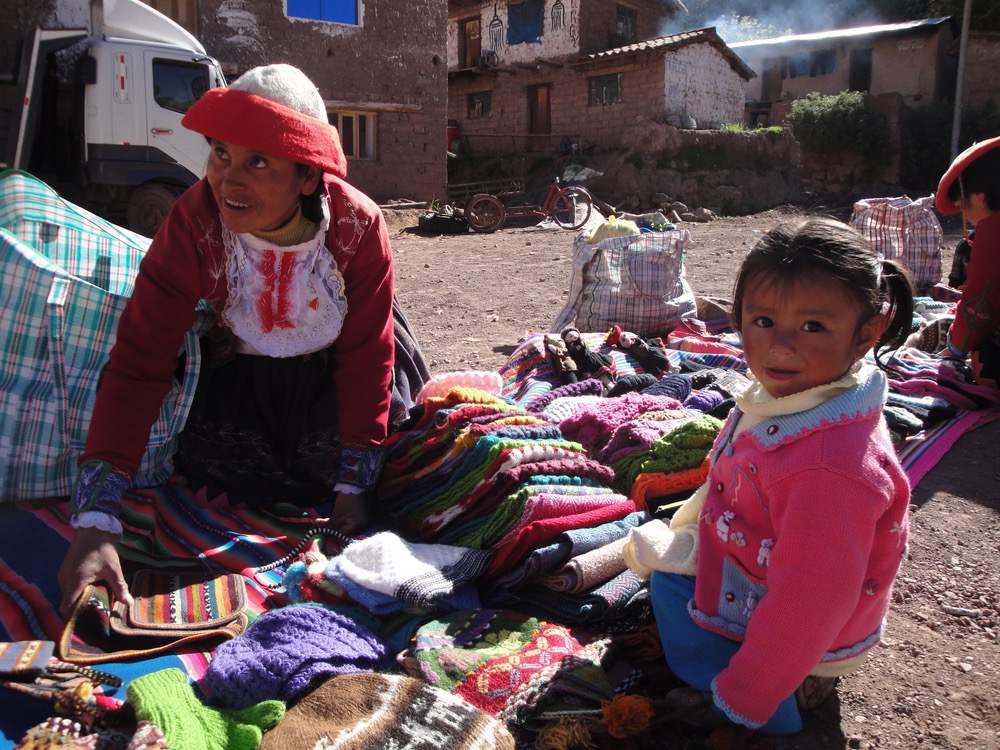
Freddy gathered us for his trail ritual. He passed around a bag of coca leaves and instructed us to each take three. We then fanned the leaves out in our hands so they resembled the sacred glacier peaks of Wakay Willka that towered behind him. With each leaf, we made a wish and blew on it.
Freddy also taught us about chewing coca leaves, which is a deep-rooted Quechua custom that has thrived for centuries and serves as a cure-all for altitude sickness, fatigue, hunger, thirst, headaches, and stomach ailments. For many cultures, the coca leaf remains controversial because one of its fifteen alkaloids contains cocaine. Freddy demonstrated the correct technique for folding ten leaves into a tight bundle and tucking them between the cheek and gums, like chewing tobacco.
Strictly for research purposes, I placed the bitter-tasting leaves in my mouth and proceeded down the trail. I spat them out after fifteen minutes as Freddy suggested. Nothing happened. After Kate and Justin voiced similar results, I grew skeptical of the coca leaf’s alleged powers.
The landscape transitioned from flat, desertlike terrain to hilly cloud forest. During frequent stops, Freddy educated us about indigenous plants and fruits; we ate “tuna” (cactus fruit), whose juicy flesh tasted like watermelon; we witnessed grayish cactus mold transform into colorful pigments for dyeing wool; and Freddy explained how porters drank chicha, a potent, fermented corn brew for numbing pain.
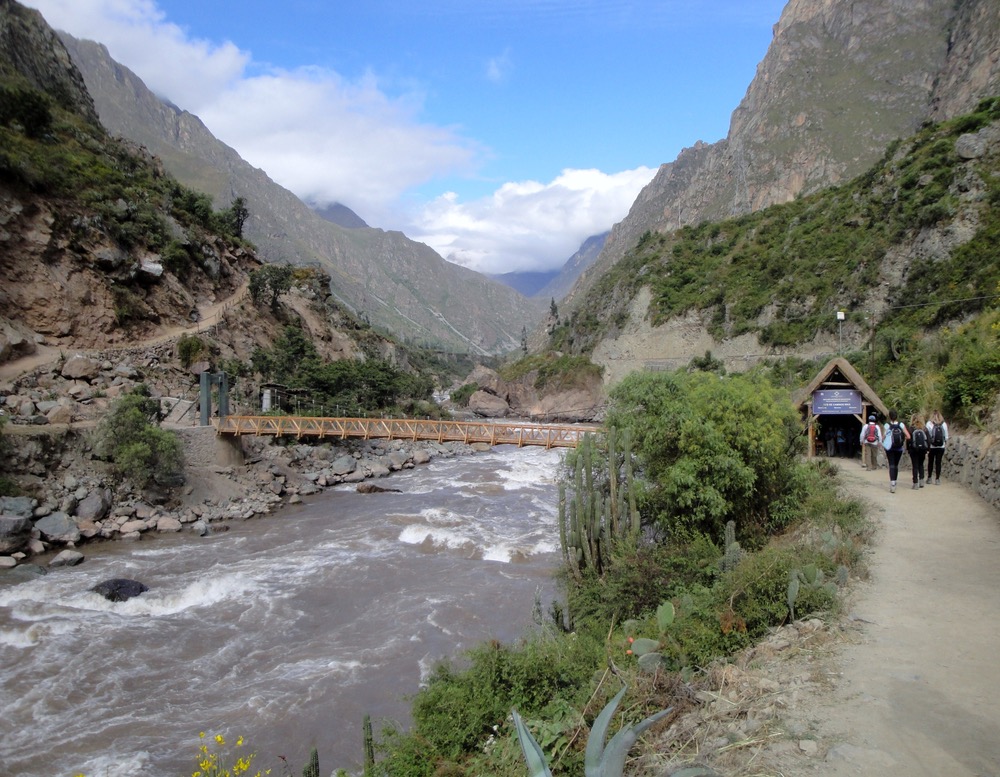
Seated in our dining tent, we lunched on fresh trout that our guide, and chef, expertly prepared from his canvas kitchen. When we resumed the hike, our porters remained to pack up everything, and still they beat us to camp by several hours.
Before dinner we participated in another trail tradition—introducing the crew. Freddy introduced and translated as each of the fourteen Quechua cooks and porters spoke. Ranging in age from twenty to fifty-one, several made poignant, heartfelt speeches. Afterwards, we introduced ourselves and took group photos.
Except for two killer hills, the first day’s trek was easy; however, I grew nervous about the next day’s hike up Warmiwañusca or Dead Woman’s Pass. Warmiwañusca, whose name is derived from the silhouette created by its mountain ridges, is notoriously known as the trail’s highest pass.
On Day 2, my alarm clock sounded at 5:05 a.m. Outside, in the dark, I heard the crew stirring. I strapped on my headlamp and packed, while porters brought us warm water for washing our faces and cups of tea brewed from coca leaves. For breakfast we ate quinoa porridge and omelets, washed down with more tea. By 7:00 a.m., we were hiking.
As we reported to the second checkpoint, each porter’s pack was individually weighed to insure none exceeded the strictly enforced fifty-pound limit. The undulating dirt trail through the cloud forest was easier than I expected. The lush trees and streams reminded me of Costa Rica. When we started gaining altitude, I gave coca leaves another try; however, this time I chewed them for longer intervals, like Freddy.
The trekkers farther ahead of us resembled ants zigzagging up an endless anthill. As the incline grew increasingly difficult, I wished for approaching porters so I could yell out, “Porters up! Porters up!” signaling a halt until they passed. However, Josefine’s tenacity inspired me. Although very sick, she pushed on. Four hours and fourteen thousand feet later, we proudly stood on Warmiwañusca’s windy summit. I basked in the moment.
Gravity (and muffled obscenities) dragged me down the two-hour, knee-jarring descent to the Pacaymayo campground. I immediately noticed our campsite was number five—my lucky number—further affirmation that divine intervention helped propel me over the pass. Upon entering camp, the crew applauded me, as they customarily did each time we gringos completed a hike. This time I felt deserving.
While we played cards, Freddy said that, although the next day’s distance was longer, the toughest hiking was behind us. I felt relieved. Ignorance is bliss.
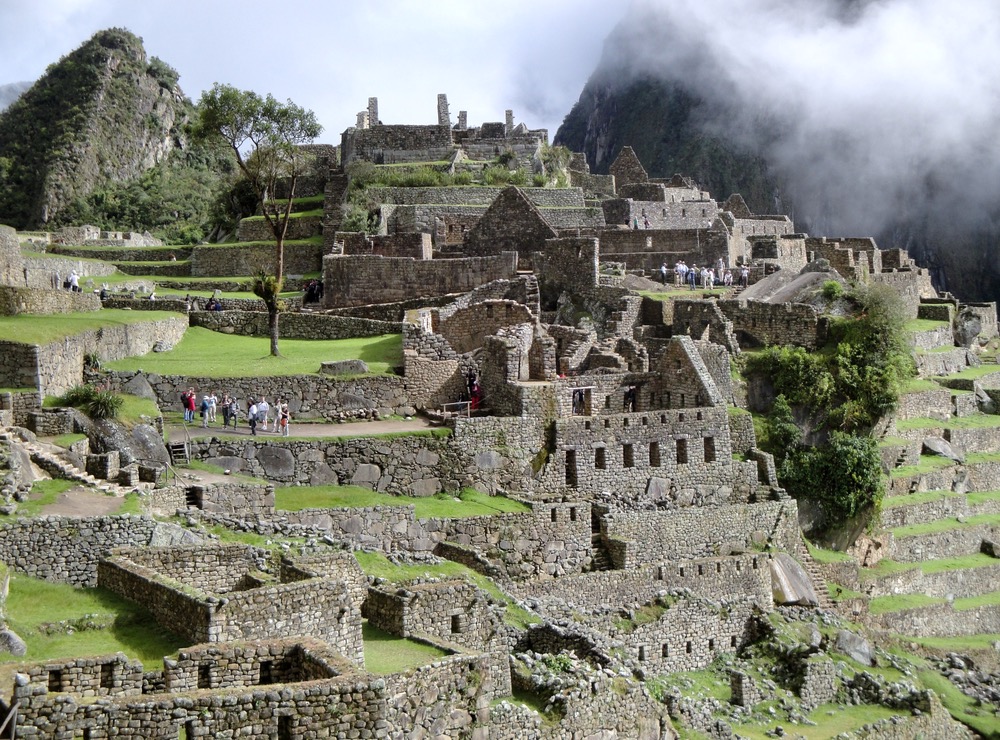
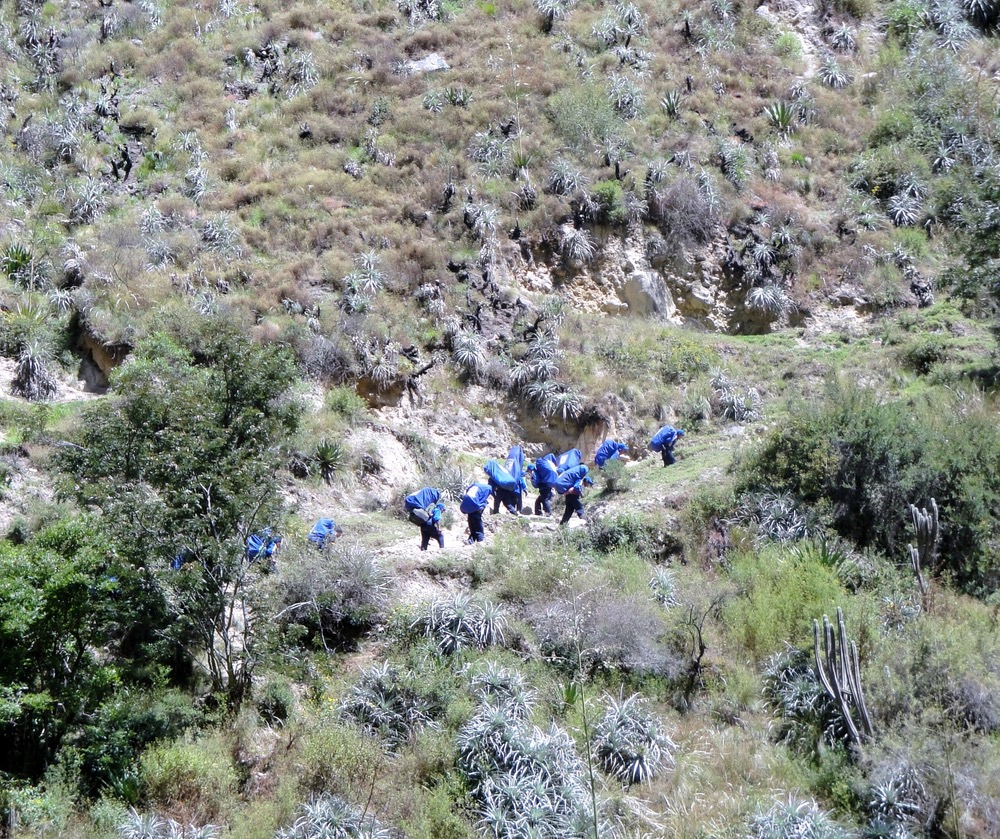
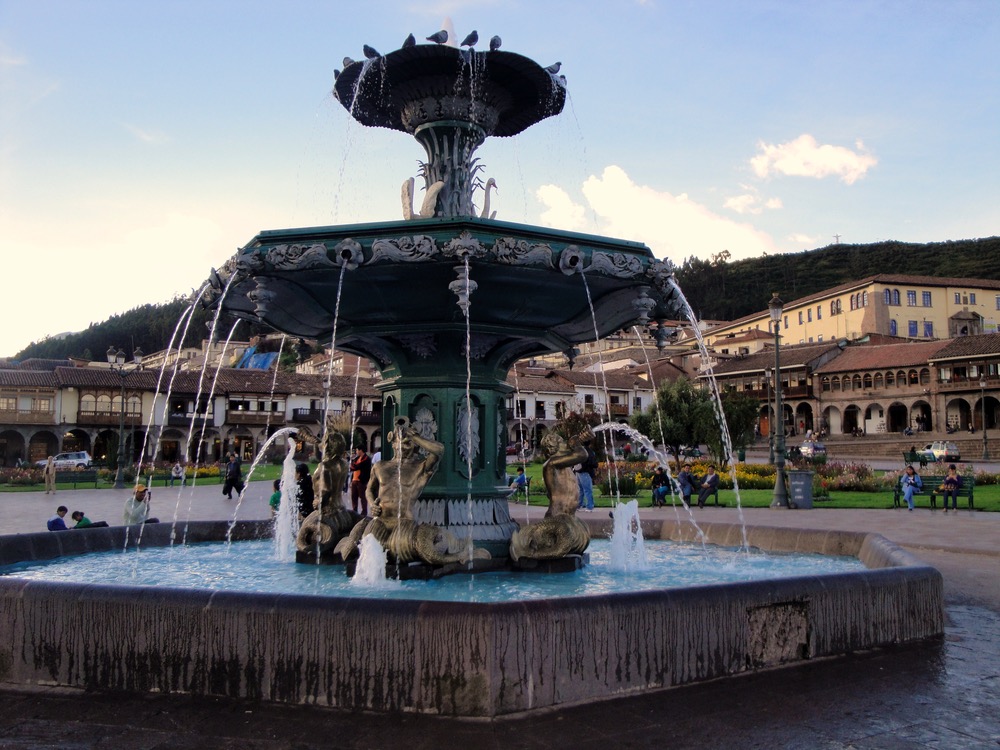
On Day 3, we awoke to chilly, overcast skies. After eating, we started our eight-hour trek. I forgot it started with a two-hour ascent up the second-highest pass. As we climbed huge stone steps, my aching legs felt like lead and I couldn’t catch my breath. Thankfully, I remembered Brian had given me his bag of coca leaves. I quickly began chewing a generous number of leaves and gulped down an energy drink. Shortly thereafter, my breathing miraculously improved and the soreness in my legs dissipated. In fact, I felt like sprinting the rest of the way up. That’s when I became a true believer in the coca leaf.
The sweeping vistas from the thirteen-thousand-foot peak were stunning and the gradual descent along scenic ridges continuously held surprises. We hiked through horizontal and vertical tunnels. We saw colorful “baby shoes,” “dancing ladies,” and other wild orchids. We “refueled” in the rainforest and hiked in the warm rain. We laughed when Sofie and Josefine looked like costumed condors in their colorful rain ponchos with pointy hoods. And we cringed while crossing a treacherous section of rocks called the “Gringo Killer.”
By the time we reached Wiñay Wayna (Forever Youthful), it was sunny and the view of San Miguel’s majestic snowcapped peak was breathtaking. Equally wonderful, this campground, unlike the others, had showers. Our chef prepared a special dinner and baked us a coca cake. Afterwards, we participated in our last trail tradition, presenting the crew with their well-earned tips. Despite my rusty Spanglish, everyone cheered after I expressed our immense gratitude to our wonderful crew.
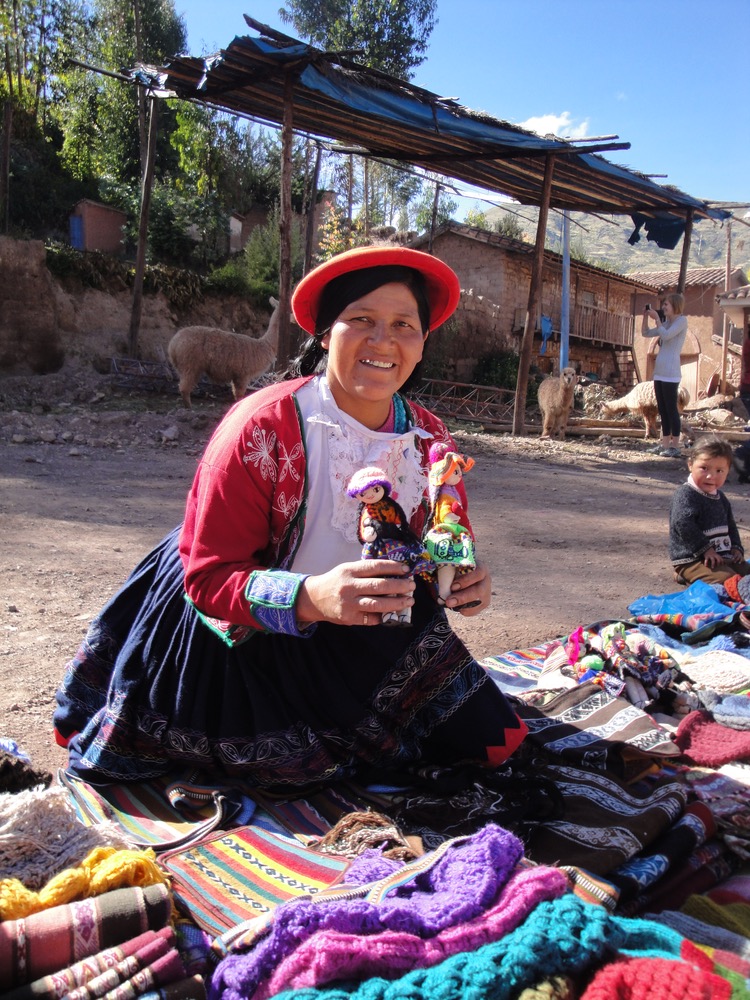
Day 4 began very early. By daylight we had traversed well beyond the final checkpoint and were within minutes of catching our first glimpse of Machu Picchu or “Old Mountain.” After crawling up the Moon Gate’s vertical steps and scaling the final ridge to the Sun Gate, we scrambled to the edge and gazed down at the mesmerizing “Lost City of the Incas.” The moment felt surreal. At the main entrance below, Jane and Dave joined us as we toured this mysterious, mind-boggling site, which no words can aptly describe. Under postcard-perfect skies, we followed Freddy along cascading, verdant terraces to countless stone temples and ceremonial baths and hillocks with stunning vistas at every turn. I whispered “Muchas gracias” to whatever entity granted my three wishes for nice weather, great hiking companions, and having an amazing trip without getting sick or injured.
Machu Picchu is shrouded in legends and theories and was hidden from the world until 1911, when Yale archaeologist Hiram Bingham III shared his discovery. Many believe Machu Picchu was a sacred, religious site for Incan elites. Others think it is situated on the vortex of energy lines, like Sedona, Arizona, and has spiritual and physical healing powers. As I walked among the centuries-old ruins, a sense of self-assurance swept over me; my career would soon soar to new heights. After all, life is as much about the journey as the destination.
— V —
Kim Duke-Layden lives at Sandestin with her husband, John, and owns KDL Marketing, a commercial real estate leasing and consulting company, kimdukelayden@yahoo.com.
Share This Story!
KEEP UP WITH THE LATEST STORIES FROM VIE
















































































































































